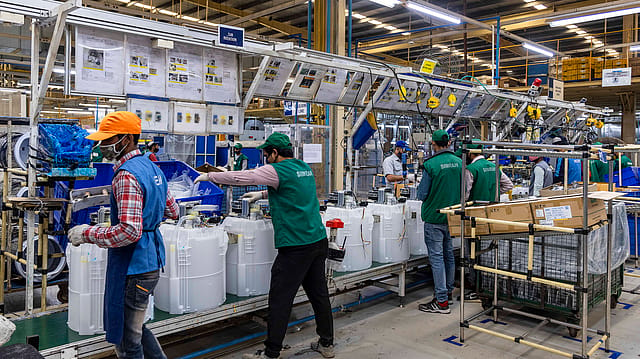India’s unemployment rate in July at 6-month low
ADVERTISEMENT

India's unemployment rate in July 2022 dropped to a six-month low of 6.8% on a better monsoon and an uptick in agricultural activity in rural areas, shows Centre for Monitoring Indian Economy (CMIE) data.
The joblessness rate dropped from 7.8% in June 2022 to 6.8% in July 2022. But, in urban India, the unemployment rate rose to 8.21% in July from 7.3% in June. Rural India provided much-needed jobs, thanks to increased agricultural activity, which dragged the unemployment rate down to 6.14% in July, from 8.03% in June. This was in contrast to activity in June when some rural areas saw irregular monsoon.
Apart from July, the unemployment rate has remained above 7% in the current financial year. For the past four months, monthly unemployment rates stood at 7.83% in April, 7.12% in May, 7.8% in June, and 6.8% in July.
On the national level, the monsoon was stable in June too. This year, monsoon onset over Kerala was on May 29, 2022, and it covered the entire country on July 2, 2022 – six days ahead of the normal date for monsoon coverage for the entire country. In July too, the monsoon remained active due to the formation and movement of low-pressure systems across central India and the monsoon trough lying to the south of its normal position.
On the job front, the CMIE data shows an employment rate of 6.9% as of August 1, 2022. The urban employment rate is 8.3%, while the rural employment rate is 6.3%.
January 2026
Netflix, which has been in India for a decade, has successfully struck a balance between high-class premium content and pricing that attracts a range of customers. Find out how the U.S. streaming giant evolved in India, plus an exclusive interview with CEO Ted Sarandos. Also read about the Best Investments for 2026, and how rising growth and easing inflation will come in handy for finance minister Nirmala Sitharaman as she prepares Budget 2026.
Notably, India recorded the biggest fall in employment during the non-lockdown month of June 2022. Jobs fell from 404 million in May 2022 to 390 million in June 2022, putting about 13 million people out of the employed category. Rural India was hit the most, primarily due to the patchy southwest monsoon in the first fortnight of June.
Further, it says consumer sentiments made a handsome recovery in July after a tepid show in the previous four months. Despite that, households are still cautious about the improvement in business prospects over the long term.
CMIE sees growth in the index of consumer sentiments (ICS) losing momentum. The index increased by 5% in February but fell in March, April and May this year. In May and June 2022, it was only 1%.
The private think tank, in its latest report, had commented that the capital inflows are expected to extend from the June quarter into the September quarter, albeit at a lower intensity.
Hindrances such as the exodus of foreign investors, external borrowing becoming costlier and a sharp drop in NRI deposits will likely moderate in the current quarter, it said. The improvement in these factors, however, will be inadequate to bridge the estimated CAD, despite the expected improvement in the macroeconomic indicator, says CMIE.
